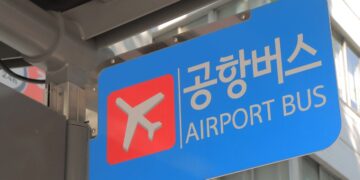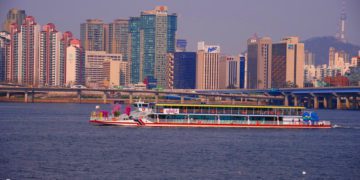Welcome to South Korea! Your flight has just touched down. The signs are glowing in Hangul, the smell of roasted chestnuts lingers near the exit, and you’re holding your luggage with a heart full of anticipation. You’re finally in South Korea. But here’s the question most travelers eventually faces: how will you get around? No worries! This guide will help you navigate the most common transportation in South Korea, with practical tips especially helpful for beginner tourists!
Navigating Most Common Transportation in South Korea: A Guide for Beginner Tourists
South Korea’s charm lies in its contrasts—bustling high-tech cities, quiet coastal villages, serene mountains, and neon-lit K-pop kingdoms. Getting around this layered landscape might feel overwhelming at first, especially if you’re not fluent in the language.

But no worries. Because once you understand the rhythm of Korea’s transportation system, it all becomes seamless—like stepping into a perfectly choreographed dance.
Today, we’re going to guide you, our beloved tourists, in understanding all about the most common transportation in South Korea. Along with the practical tips we give you below, this guide will help ease your adventure to your dream country, especially if you’re a firsts timer.
Let’s unravel the transportation system in South Korea—designed for the curious, powered by precision, and waiting for you to hop on.
The Subway System: How It Moves South Korea as the Most Common Transportation
First of all, we have the subway. As one of the most common transportation methods in South Korea, the subway is basically a whole new level of cultural experience, especially for beginner tourists.

In cities like Seoul, Busan, Daegu, and Gwangju, subways are clean, safe, hyper-efficient, and full of delightful surprises. They’re basically giving you exciting themed station music, underground shopping arcades, and even museum exhibits on your commute.
Furthermore, you will also notice how South Korea color-coded their trains and posted the signs in multiple languages. Popular stops often include sensory cues: a splash of traditional drums at a palace stop or seagull calls when nearing the beach. These are brilliant addition to the transportation services in South Korea that makes it nearly impossible to get lost even if you’re new tourists.
Now, once you land, make sure to grab a T-money card right away—South Korea’s tap-on, tap-off answer to hassle-free mobility. Available at nearly every convenience store, this rechargeable card covers all subways, buses, and even taxis.
Use apps like KakaoMap or NAVER Map to plan your route. These apps offer English support and tell you exactly where to board for the shortest transfers—even which subway car will get you closest to your exit.
Now, unfortunately, while Korea’s subway systems have elevators and priority seating, accessibility options for travelers with mobility needs can be limited—especially on older bus routes or rural lines.
Pro tip: Avoid rush hour (7:30–9:00 AM and 6:00–8:00 PM) unless you’re curious what “standing room only” really means. And if you’re standing near a designated silver seat for seniors, don’t sit—Koreans take transit etiquette seriously.
Rolling Through the Real Transportation in South Korea: Understanding the Bus System
If the subway is the skeleton of Korea’s cities, buses are the connective tissue. As another most common transportation in South Korea, these buses are ideal for reaching pockets of life that subways don’t serve: mountain temples, coastal hideouts, or that little hole-in-the-wall tteokbokki shop you saw on TikTok.
Now, as beginner tourists, you should understand that as most common transportation in South Korea, city buses come in four colors, here’s the guide:
- Blue: Main routes through Seoul’s urban core
- Green: Shorter lines connecting neighborhoods and subway stations
- Yellow: Circulating through key tourist zones
- Red: Express routes to and from suburban areas
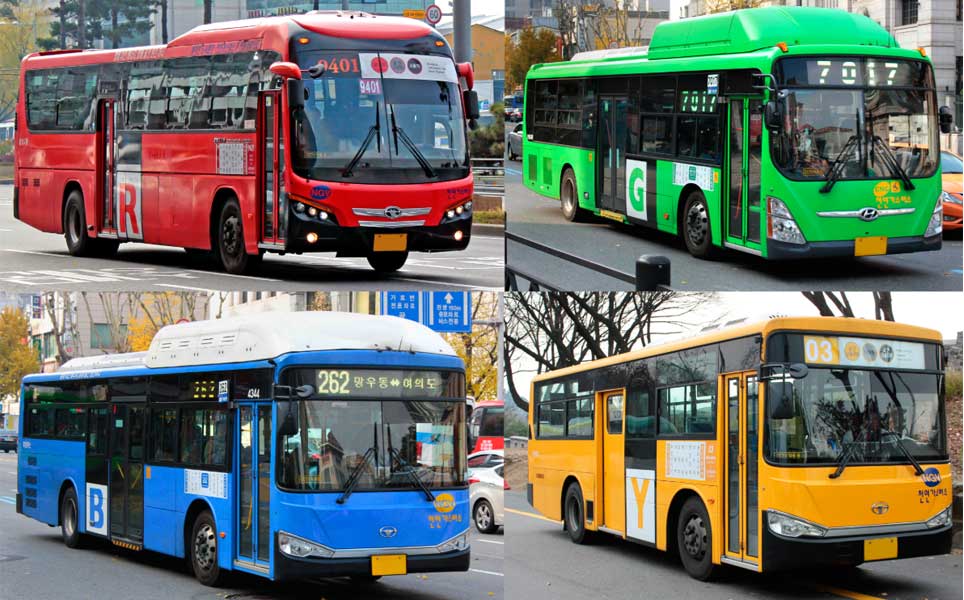
Each bus has an LED sign indicating its next stop. And if you’re unsure where to get off, just keep your route open on KakaoMap. Also, please remember to tap your T-money card at the front reader when boarding and again at the rear when exiting. Miss tapping out, and you miss your transfer discount.
Outside of big cities, intercity and express buses connect Korea’s regions. These are surprisingly luxurious, often with reclining seats, footrests, and charging ports. If you’re heading from Seoul to Busan or Gyeongju, this is often more scenic—and sometimes more comfortable—than flying.
Don’t Forget
Bus stops have real-time monitors showing bus numbers, routes, and even how full each upcoming bus is—coded in colors (green for empty, red for crowded). And yes, standing on buses is common, but don’t forget to hit the red stop button near your seat if you want to get off.
One more thing—if you’re using a T-money or NAMANE card, you’re eligible for free transfers between subways and buses. Just remember to tap both when getting on and off. You must board the next vehicle within 30 minutes (or 1 hour if traveling between 9 PM and 7 AM) for the discount to apply. Up to four transfers are allowed per journey, but transferring onto the same route won’t count.
Read also: Public Transportation Cost Increase in Seoul and Busan
Taxi Culture in Korea: Still Affordable, Always Polite
Next, this may not be the most common transportation method in South Korea, but as beginner tourists, taking a taxi doesn’t come with a side of stress. Korean taxis are affordable, clean, and GPS-savvy. In Seoul, starting fare is around ₩4,800 (about $3.50 USD) depending on the city, and some credit cards are widely accepted.
However, not all taxis are created equal:
- Regular taxis are cheap and basic.
- Deluxe taxis (black with a yellow stripe) cost more but offer extra comfort and space for luggage.
- International taxis are English-friendly and great for airport transfers.
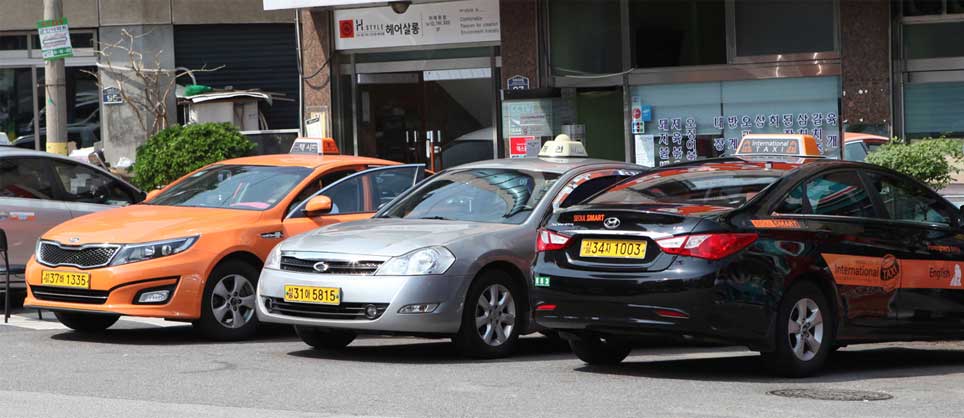
To skip the street hail, download Kakao T or UT (Uber Korea). These apps offer estimated fares and directions. While UT connects you to more “ride-hailing-style” drivers, Kakao T syncs with licensed taxis nationwide. Some taxis accept T-money cards, but not all. And while you can book rides with foreign phones, in-app payment may not work with overseas cards. Pay the driver directly with cash or swipe a credit card in person.
Tip: Always show your destination written in Korean or on a map pin—most drivers don’t speak fluent English. Being prepared avoids awkward detours.
Getting from Airport to Adventure: Incheon & Gimpo Gateways
South Korea’s two major airports—Incheon International and Gimpo—are seamlessly linked to Seoul and beyond.
From Incheon Airport, you have three major options:
- AREX Express Train: Non-stop to Seoul Station in 43 minutes (₩9,500). Clean, fast, and with Wi-Fi.
- All-Stop AREX: Cheaper (₩4,750), takes 10 minutes longer, but hits several neighborhoods.
- Airport Limousine Bus: Great for door-to-door drop-off. Slower in traffic but ideal if you’re carrying heavy luggage or heading to Gangnam, Myeongdong, or Dongdaemun.
From Gimpo Airport, AREX whisks you to Seoul in just 20–26 minutes for a fraction of the cost. Taxis are also easy to find, but note: early morning and late night rides may come with a slight surcharge.
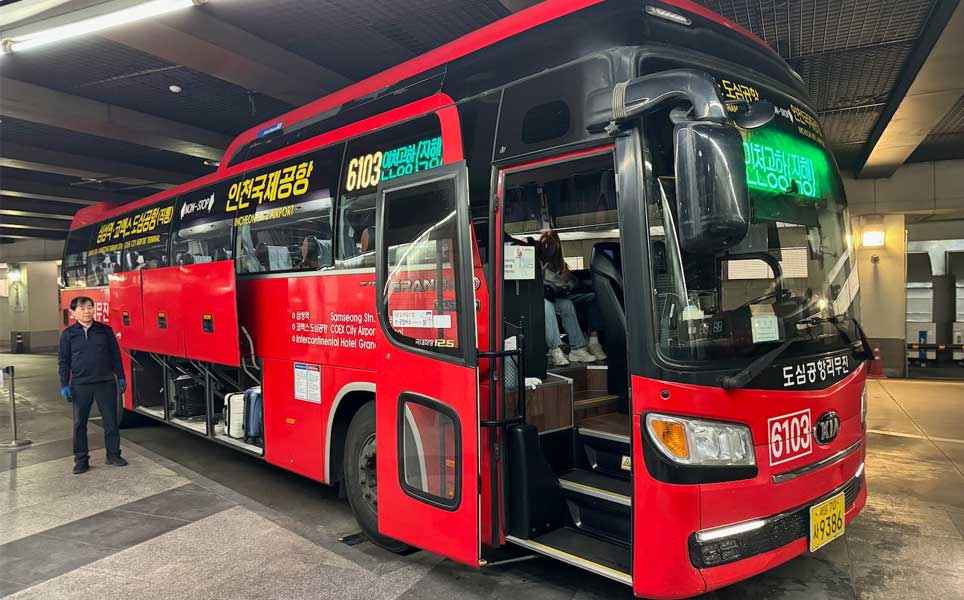
KTX and Long-Distance Rails: Bullet-Speed Across the Country
If you’re planning to city-hop, the KTX (Korea Train Express) is your sleek new best friend. Running at speeds of up to 305 km/h, KTX connects Seoul, Daejeon, Daegu, Busan, and more in comfort and style.
Buy tickets via the Korail website or app (English supported), and choose from standard or first-class seats. Reservations are recommended, especially during weekends or holidays.
Prefer something more budget-friendly? ITX-Saemaeul and Mugunghwa-ho trains are slower but significantly cheaper—and still remarkably clean and punctual.
And here’s the best part: Rail stations often double as cultural centers, with bookstores, cafés, convenience stores, and even art installations waiting while you wait for your train.
What About Ferries, Flights, and Bikes?
If you’re island-hopping to Jeju or Ulleungdo, ferries are your scenic route—especially from ports like Mokpo, Busan, or Incheon. If speed is key, low-cost airlines like T’way, Air Seoul, and Jeju Air offer frequent, budget-friendly domestic flights.
And yes, biking in Korea is real—and beautiful. Major cities have riverfront bike lanes (Han River paths are a dream) and rentals via apps like Ddareungi.
But heads up: not all urban areas are bike-friendly, so plan your routes wisely.
All About the Card: T-Money vs. NAMANE vs. WOWPASS
By now you know the T-money card is essential. But it’s not the only one.
- Cashbee: Virtually identical to T-money, just branded differently.
- NAMANE: Offers app-based top-ups and customizable card designs (hello, K-pop photo cards).
- WOWPASS: A debit-style card made for foreigners—use your passport to buy and load in your home currency.
You can buy these at 7-Eleven, CU, GS25, and subway vending machines. Load them with cash and tap your way across the country. They’re also accepted at convenience stores, vending machines, and some cafés.
Need to refund unused balance? Head to a T-money desk at major stations—but note: ₩500 fee applies and card purchase cost is non-refundable.
And please keep in mind: refunds between ₩10,000 and ₩50,000 can only be processed in ₩10,000 units, and only at Tmoney Town or certain subway service centers.
Refunds below ₩10,000 or above ₩50,000 may not be accepted at most kiosks. And if you’re using a NAMANE card, expect a 3% fee when topping up with a credit or debit card.
Crucial Tips: A Guide for Navigating Transportation in South Korea (Especially for Beginner Tourists)
Even with Korea’s organized systems, your first few days navigating public transportation might still feel like a maze. But don’t worry—once you pick up a few essentials, you’ll glide through the country like a local. Check out below crucial tips you absolutely need to know as guide for navigating Korea transportation:
1. Always Carry Cash (in Small Bills)
Most transit cards—T-money, Cashbee, WOWPASS—require cash for top-ups, especially at convenience stores and vending machines. Have ₩1,000 and ₩10,000 notes on hand, especially when arriving at the airport. Some machines do not accept cards or large bills.
2. Don’t Rely on Google Maps
In Korea, Google Maps lacks real-time data and often gives inaccurate directions. Instead, download NAVER Map or KakaoMap. Both have English versions, provide up-to-date bus and train times, and let you enter destinations in English or Korean. These apps even tell you which subway car to board for the fastest transfer.
3. Know How to Identify Your Stop
Subway and bus stops are announced in Korean, English, and often Chinese. But on smaller bus routes or late at night, announcements may be unclear or rushed. Always watch for LED screens at the front of buses or above subway doors, and keep your map app open to track your position in real time.
4. Tap Your Transit Card Twice
Unlike in some countries where you tap once, in Korea you need to tap on and off—especially on buses. Missing your tap-out means losing transfer discounts and being charged the full fare again. On subways, gates won’t open unless you’ve properly tapped.
5. Watch the Reserved Seats
Seats marked for elderly, disabled passengers, or pregnant women (often pink, silver, or with special signage) are never to be used by young or healthy passengers—even if empty. These are culturally respected spaces. Standing is the norm, especially during peak hours.
6. Avoid Peak Hours for Comfort
Morning (7:30–9:00 AM) and evening (6:00–8:00 PM) rush hours can be intense. Subways and buses will be packed, especially in Seoul. If you’re carrying luggage or feeling anxious in crowds, time your travel outside these windows.
7. Taxis Don’t Always Speak English
Even in Seoul, many taxi drivers speak limited or no English. Always show your destination in Korean, either written down or on your map app. You can also pin locations on Kakao T to avoid misunderstandings.
8. Be Silent, Be Mindful
Korean public transit is quiet. Loud talking or phone calls are frowned upon. Use headphones, keep your voice low, and avoid eating or drinking—especially on the subway. It’s part of the unspoken cultural code of respect for shared space.
9. Don’t Assume the Same Bus Number Goes the Same Way
Some buses share the same number but travel in opposite directions. Double-check the final destination on the LED screen at the front or confirm in your app before hopping on. It’s one of the easiest mistakes for beginners.
10. Prepare for Subway Exits to Feel Like a Labyrinth
Large stations like Gangnam, Hongdae, or Seoul Station can have dozens of exits. Your map app will tell you exactly which exit to use—follow it carefully or you might end up blocks away from where you meant to be. Some exits connect underground malls and can be disorienting.
11. Save These Words for Emergencies
- 하차 (hacha) = Get off
- 정류장 (jeong-ryu-jang) = Bus stop
- 역 (yeok) = Station
- 탑승 (tapseung) = Boarding
- 출구 (chulgu) = Exit
Screens and signage will show these often, and recognizing them can help you avoid missed stops.
12. Want a More “Foreigner-Friendly” Start?
If all of this sounds overwhelming, WOWPASS is a solid option. Designed for tourists, it combines transit card, shopping debit card, and currency exchange in one. You’ll need a passport to register, but it’s convenient for managing transport and spending without juggling cash.
Navigating Korea Transportation Like a Local – Even as Beginner Tourists
Transportation in South Korea doesn’t just get you from place to place—it shapes your experience of the country. It’s the breeze from a bus window in Jeju, the quiet lull of a late-night subway in Seoul, the polite silence of a taxi ride through rainy streets.
Use this guide as your compass to navigating transportation in South Korea. The apps, cards, and systems are here to support you. What’s left is the wonder you’ll feel when the train doors open—and South Korea greets you, one stop at a time.
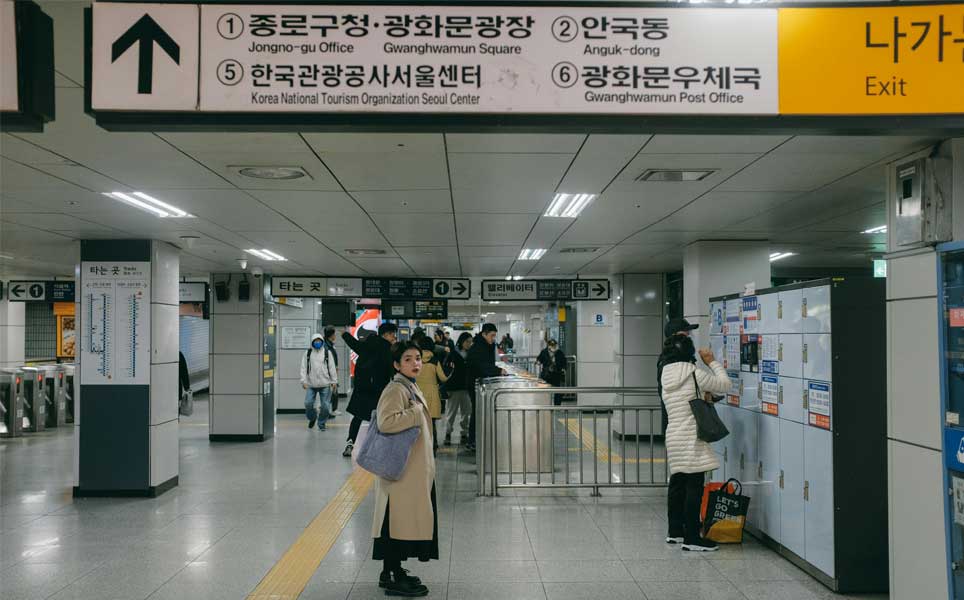
Related Posts
2,202 total views, 4 views today


